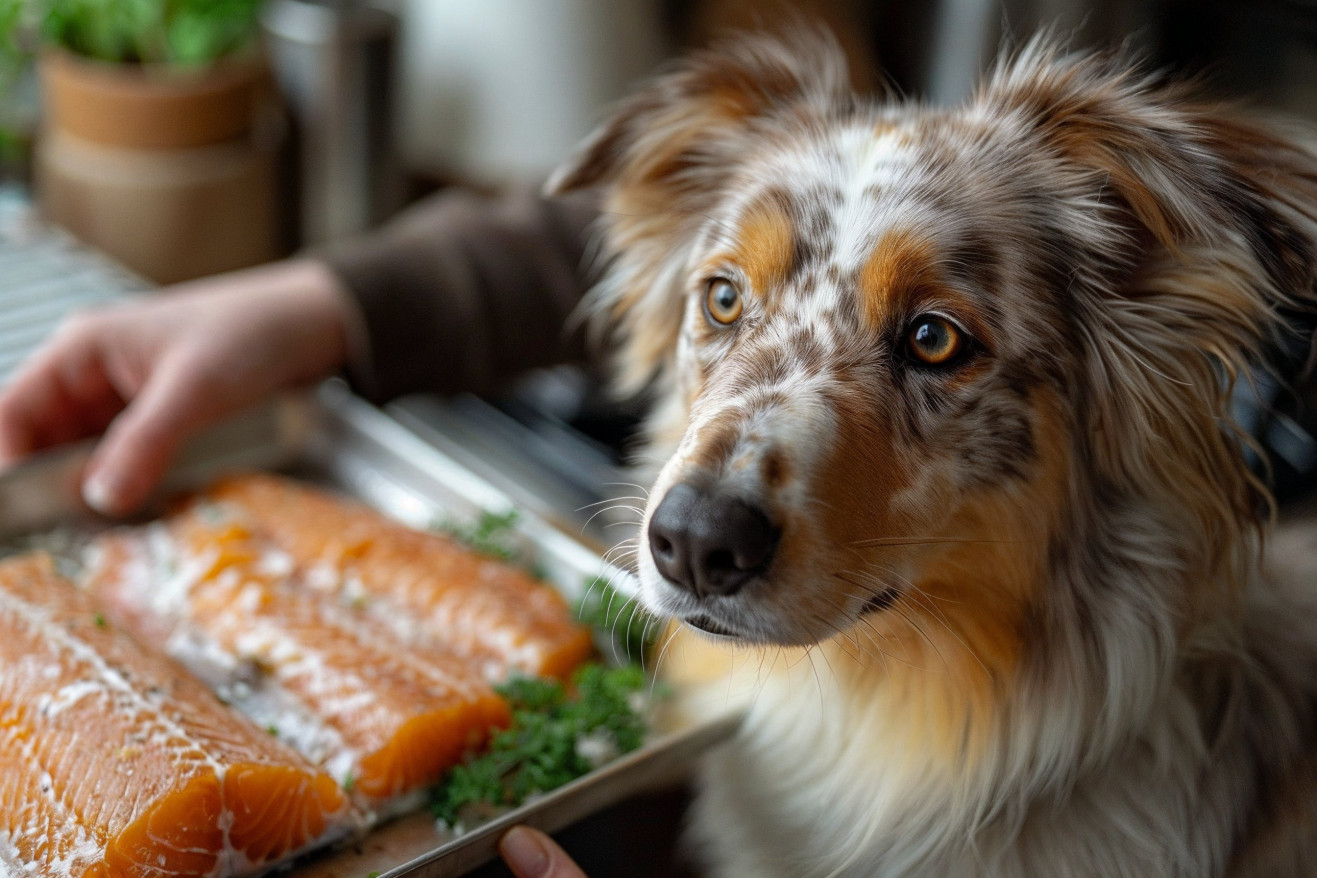Can Dogs Eat Cod? A Look at Feeding Fish to Fido
12 May 2024 • Updated 11 May 2024

If you’ve recently gone fishing and caught a bunch of cod, you might be wondering if it’s OK to share your catch with your dog. Cod is a great source of lean protein, B vitamins, and minerals, and it can be given to dogs in small amounts as an occasional treat. However, it’s important to make sure the cod is boneless, as the bones can be a choking hazard, and to avoid giving your dog raw or undercooked cod, which can lead to food poisoning.
In this article, we’ll take a closer look at what the experts, including veterinarians and animal nutritionists, have to say about the benefits, potential downsides, and best practices when it comes to feeding cod and other fish to dogs. By the end of this article, you’ll have the information you need to decide if you want to add fish to your dog’s diet and, if so, how to do it in a way that’s safe and healthy.
Can dogs eat cod?
Cod Allergies in Dogs: Symptoms and Management
Some dogs are allergic to cod and other fish proteins. A study published in BMC Veterinary Research found that 44% of dogs with confirmed cod allergies had positive IgE reactivity to cod extracts. Symptoms of a cod allergy can include skin problems such as itching, redness, and hives, and gastrointestinal issues such as vomiting and diarrhea, according to VCA Animal Hospitals. In some cases, dogs may experience anaphylactic shock, a life-threatening allergic reaction that requires immediate medical care.
The only way to diagnose a cod allergy is with an elimination diet trial, which involves feeding the dog a hypoallergenic diet for 8-12 weeks to determine which food is causing the allergic reaction, according to VCA Animal Hospitals. WagWalking.com suggests using a hydrolyzed protein diet for the trial because proteins are often the cause of food allergies. Once a dog is diagnosed with a cod allergy, they will need to avoid the allergen for the rest of their life to prevent skin and ear infections. However, with the right diet, dogs should feel better within a few weeks.
How to Cook Cod for Dogs
Cod needs to be cooked to ensure that it's safe for dogs to eat, and to kill any bacteria, viruses, or parasites that may be present, according to Recipes.net. Don't give your dog raw, salted, smoked, or seasoned cod, as these can all be dangerous to dogs. Goodness Gracious recommends baking, steaming, or boiling as the best ways to cook cod.
Make sure to remove all bones, skin, and any added fats or oils before you serve it to your dog, according to Blue Skies for Me Please. Many homemade cod recipes call for baking the fish and then combining it with vegetables or grains, like this one from JustFoodForDogs.
Portion Sizes and How to Avoid Overfeeding
The American Kennel Club warns that overfeeding fish to dogs can lead to obesity, so it's important to talk to your vet about portion sizes, especially if you plan to feed fish to your dog on a regular basis. The AKC also says that treats should account for no more than 10% of your dog's daily caloric intake.
JustFoodForDogs explains that cod is one of the best fish for dogs because it's lean, low in fat, and high in protein. However, it should be fed to dogs as a treat and not a staple of their diet. Feeding dogs too much cod or any other type of fish can lead to obesity and other health problems. Vets recommend adjusting portion sizes if you're feeding your dog cod as a regular part of their diet or as part of a homemade diet.
What Are the Benefits of Cod Skin for Dogs?
When prepared safely, cod skin can be a nutritious, high-protein snack for dogs. According to Natural Pet Warehouse, cod skin is full of omega-3 fatty acids, which can help improve skin, coat, and joint health. In addition, air-dried or dehydrated cod skin treats are low in fat and easy for dogs to eat, making them a great, natural option.
That said, as mentioned by Four Leaf Rover, there are some risks to consider. Fish skins can be contaminated with toxins like heavy metals and PCBs, which build up in the fatty tissue. Toxins and parasites can be minimized with proper sourcing and preparation.
Applaws suggests looking for fish skins from smaller fish that are wild-caught, which are less likely to be contaminated with mercury and other toxins. They also warn against giving dogs raw fish skins, which can be contaminated with bacteria. If prepared properly, cod skin can be a great way to help keep your dog's teeth clean and provide them with essential nutrients.
Conclusion: How to Add Cod to Your Dog's Diet
If you want to add cod to your dog's diet, it can be a healthy and nutritious option as long as it's fed in moderation. Studies have shown that cod is a good source of lean protein, B vitamins, minerals, and omega-3 fatty acids, all of which can be good for your dog. Pure Pet Food even notes that cod is a great protein source for dogs and is often used in dog food as an alternative protein source for dogs with allergies.
That said, it's important to make sure that the cod is prepared properly. Raw or undercooked cod can contain harmful bacteria and parasites, so Purina recommends cooking cod thoroughly and removing all bones before feeding it to your dog. Many homemade recipes for dogs that include cod involve baking or steaming the fish and then mixing it with other ingredients like vegetables or grains.
It's also important to make sure that you're feeding your dog the right amount of cod. Dogster explains that treats like cod should make up no more than 10% of a dog's daily caloric intake to avoid health problems like obesity and pancreatitis. A veterinarian can help you figure out the right amount of cod to feed your dog based on their specific nutritional needs.
It's also worth noting that some dogs can develop allergies to cod and other fish proteins. A study in BMC Veterinary Research found that the most common symptoms of fish allergies in dogs are skin problems and gastrointestinal issues. If you suspect that your dog has a cod allergy, the best way to diagnose it is to put them on an elimination diet trial, and if they're diagnosed with an allergy, they'll need to avoid the allergen completely.
As long as it's prepared and fed in the right way, cod can be a healthy and nutritious addition to your dog's diet. Working with a vet and considering other types of fish like salmon and whitefish can help you ensure that your dog's diet is balanced and healthy.


